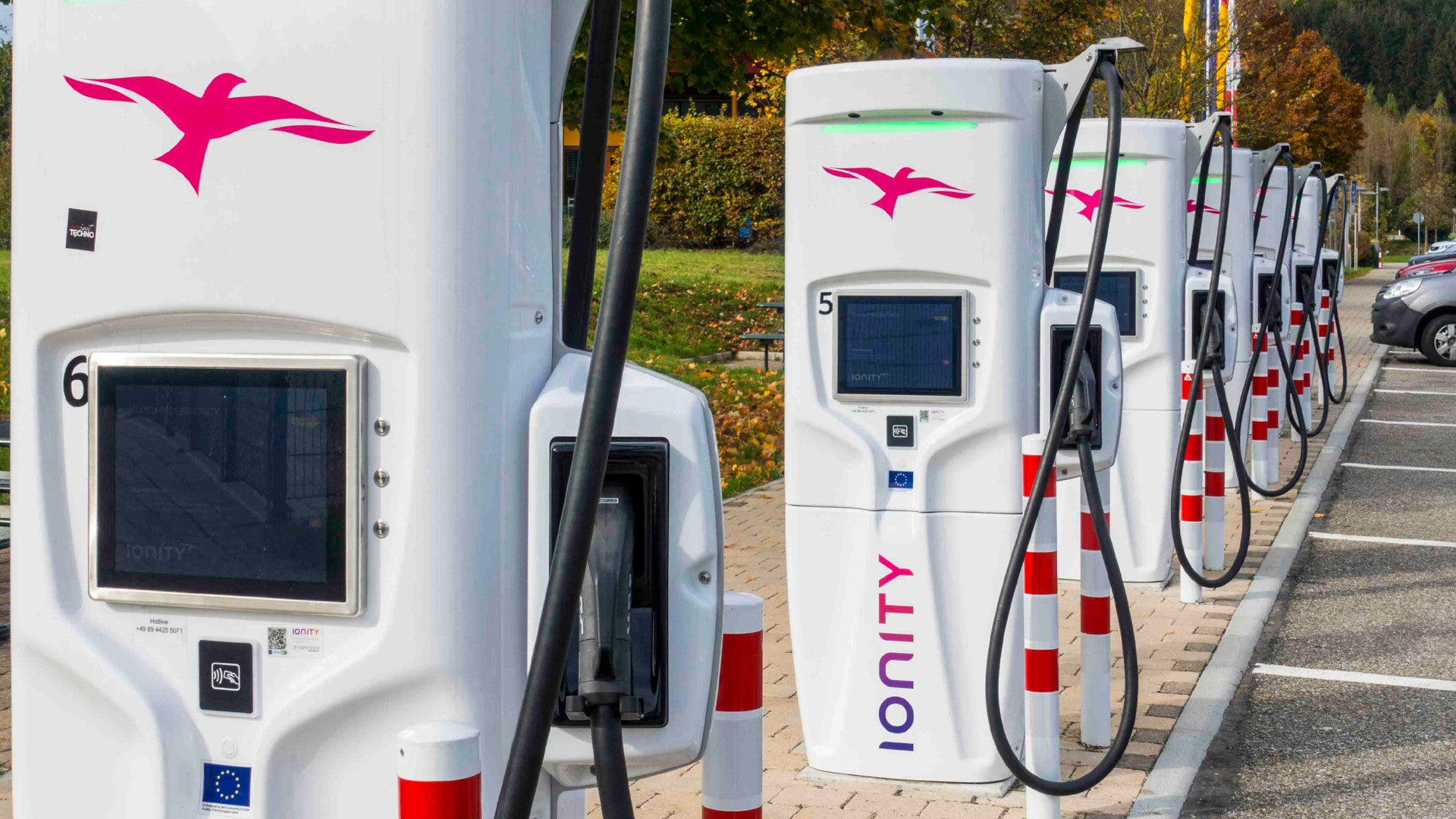- cross-posted to:
- technology@lemmy.world
- cross-posted to:
- technology@lemmy.world
Gas stations will need to evolve to account for the wait of EV charging. They will need to become fast casual restaurants with options for long-term stayers and this is not possible with some landlocked locations, as opposed to newer developments in the states.
I think you have it backwards.
Gas stations don’t need to evolve to become restaurants… restaurants needs to simply add chargers.
It isn’t even a huge leap for customers to expect it either. Some 15 years ago there was a big push for restaurants and stores and markets to install wifi for their customers. This is not all that different, quite honestly. If a restaurant has 15 parking spots in it’s lot, it shouldn’t be a huge ask to install a handful of chargers which can be shared by most of the parking spots. Most parking lots already have some kind of power out there for signage or lightpoles. You can tap off that, or go solar.
The time and money cost of installing wifi is probably pretty different from the cost of installing EV fast chargers
I think they are closer than you might think. You obviously can’t consider what it would cost to set up wifi using today’s technology. You’d have to consider early 2000s tech and what that cost. Also for EV chargers today, many areas have rebate programs to reduce costs. There’s also the incentive to charge for the electricity - turn it into a money maker for the business.
With housing the way it is, and AI driving being a possibility, we’re going to see a huge influx of people truly living in their cars. Add remote work into the mix?
Removed by mod
it’s not, what about the handicapped who need assistance? Gas station has those.
- all the amenities that are at the gas station so you can do stuff during your 15 minute charge,
this should be done along major roads everywhere
Though I’d agree simple 230v (since it’s the EU) charging in many places is something that should be a focus too, mainly at workplaces and stuff like that where people spend a lot of time
They should concentrate on making EVs financially more plausible for people without an electrified garage. Half of Germany lives in flats, most without an own parking space and will pay much more for charging their EV with much less comfort. And politics seem to completly ignore that.
While I agree, it is much easier to bring in charging stations to gas stations where infrastructure is already built out. It seems like a near-term win with the long-term option for flat integration/power connectivity
The electric infrastructure is the whole grid. I’d argue apartment complex are better prepared for the increased power use than a gas station and is more convenient a location than gas station.
What are you going to do while waiting for your car to charge? At least at home you can go… home. Shopping centres are a close second. You can do your shopping while you’re charging. Parking spaces and grid are already there.
I’d argue apartment complex are better prepared for the increased power use than a gas station and is more convenient a location than gas station.
They solve different problems: in the apartment complex you charge during the night for the daily usage while at the gas station is for the longer drives.
And while charging, at least in Europe, you can simply eat your lunch at the station restaurant/fast food/self service/whatever
that’s assuming these things actually work I keep picturing the scenario where you pull up to a gas station in the air pump doesn’t work while you’re trying to inflate your tire
Im guessing but I bet it is mostly due to the local infrastructure. It is easier to run electrical and install new chargers at a place of business versus residential. The infrastructure at a business is built to expand unlike parking spaces at an apartment complex. You cannot easily tear up the concrete and install electrical when hundreds of families are sleeping or getting home from work
You cannot easily tear up the concrete
Concrete near houses is wasteful. In NL stones are used instead. Installing a charger is easy. There are loads and loads of chargers. In my city they are at most 50 meters apart from each other.
I completely disagree with pretty much everything you said based upon how NL does it. It’s easy, it doesn’t take a long time, it doesn’t affect anyone sleeping, etc.
What is NL
Netherlands
I get your point. But to be fair: for landlords where massive subventions in place. This program ended amd was not renewed because of lack of interest.
But at least for new buildings, a policy to force charging stations at every parking lot would be a good idea
That is why it should be solved by our politicians. They cannot always leave the main burden to the poor and the middle class…
Rented a Tesla this summer for a trip with my family- where I was in Michigan, the nearest superchargers were in the lot at Meijers (a regional supermarket chain), which made sense for Meijers (there’s already a big lot there, already infra, it’s a place you can tie fueling up with getting groceries) but it meant I had to drive half an hour to shop instead of going to the local market.
My thought is that they should be planting superchargers (or their functional equivalent) in every store or restaurant parking lot because when the only place to get a charge is in the next county over, that’s directing EV drivers there and not local
Yeah, it’ll cost something to build out infra to support that much power but honestly the US grid needs the upgrades anyhow- and if anything, electricity is relatively cheap compared to buying gas
What a bone-headed move. A gas station is not really set up to handle vehicles that might be there for 5x, 10x or maybe even 15x longer than a gasoline car takes to fill up. You’d be far better off, putting them in the parking lot of a local grocery store or movie theater or restaurant.
While it is a good idea to put them near the places you suggest, it not stupid to put them also at the gas stations. Here we already have gas station on highways with EV charging stations and they just take some parking places, usually a couple in the smaller stations and maybe up to a dozen in the biggest ones. It is a nice advantage to be able to have lunch while the car recharge.
maybe they need the parking lots, for people putting gasoline via canisters in their cars.
As others have mentioned it’s as well as not instead of.
However it’s boneheaded to charge to 100% the vast majority of the time as it’s often as slow to charge from 20 to 80% as it it from 80 to 100% on an ultra rapid charger as it massively slows down above 80.
I can charge twice from 10 to 80% with my car in about 40 minutes for a range of almost 500 miles vs. One 10 to 100% for a range of almost 320 miles in the same time.
I only fully charge at home and only if it makes sense for the journey I’m doing. It’s not good for the long term health of the battery to repeatedly charge it to 100% all the time. Plus it’s kind of a dick move to block fast and ultra chargers with the slow charge above 80%.
Then there’s the cost, I don’t want to spend 45 to 75p a kWh to charge on a public charger when I pay 9p at home on my ev tariff. If I do need to charge I only charge what I need, which can be as little as 5 minutes for about 60 miles.
Sure, not every car comes with 350kw support (or even 250kw) yet, but more will as people realise that charging speed is at least as important as range if you plan to travel in Europe.
What car has almost 500 miles of range at 80% state of charge?!
While new models get released all the time, the Lucid Air is known to have one of the longest EV ranges and it is around 510 miles from 100%.
A car would have a total range of around 625 miles at 100% if it is getting 500 miles at 80%.
Charge to 80% twice, if you read what I wrote, is almost 500 miles, and takes about as long to charge both of those times in total vs. charging just once to 100% on an ultra rapid charger.
We could have a look at Norway how they are dealing with the transformation, e.g.https://insideevs.com/news/532464/fuel-stations-norway-fast-chargers/. And maybe this is also part of it as well: https://www.fuelsandlubes.com/totalenergies-to-sell-retail-network-in-germany-and-netherlands/. And Aral is already having REWE to go.
Hopefully they will have it so that the EV charging stations included will be under canopies to protect them from the weather, as I know that that is a big problem with current canopy-less implementations.
Gas pumps have had canopies for as long as I can remember. This should be expected.
Indeed it should, though there are many EV charging stations where it isn’t the case, especially in America. Tesla’s Charging locations are like that, they usually don’t have a canopy over the Chargers, which in my opinion doesn’t seem like a great practice because it exposes the machines to the elements and make them unpleasant for users when it’s raining or snowing.
Okay, but who is building the vast energy grid infrastructure required to move the gargantuan amounts of electricity that will be required once all vehicles make the switch?
I’m all for it, but I don’t hear anybody talking about the huge national grid upgrades that will be required, or who’s going to pay for it all, or how many years it’ll take to get done.
Everyone seems to talk about building more chargers, but not going any further than that.
I can’t speak for other countries, but since the article is about Germany: You have never heard of Netzentwicklungsplan, Südlink, Südostlink, Lastmanagement für Ladestationen and many more of these things? The Netzausbau (expansion of the power grid) and Lastmanagement (power distribution management) is pretty much a huge topic for all Netzübertragungsbetreiber and the other smaller power grid operators in Germany. Most of the development is slow at the moment because of bureaucracy and NIMBYs but it is actively being worked on.
Atleast better than the train network lmao
Germany is so weird. Sometimes they’re fuckin genius: xrays, airbags, aspirin… and then we have this.
Who spends enough time at a gas station to charge an EV? What are you thinking?
Hyundai and Kia EVs go to 80% in 15 minutes.
Gas stations are much better place for that than random tesla supercharging spots, there are people to assist the disabled, you have Toilets, food, coffee basically you can do stuff for 15 minutes easily.
Oh yeah. More diesel generators in rural areas, because the local power supplies can’t keep up with multiple fast charging stations.
Edit : turns out that the container appearing at super charging station are not generators, it’s a hoax. But no one could tell me their exact purpose.
Huh? That’s not a thing that happens except on tiny islands where you don’t need fast charging
Seems I have fallen for a hoax. Over the years, tesla charging stations appeared here and their. Some of them with a suspicious container. People told me that there is a backup generator in there, when the power grid fails to provide. But the generator /container ist to small to provide the output needed for supercharging. But I couldn’t find any article explaining the real purpose.
A container/ small building could be the inverter/transformer for DC fast charging. Essentially most things for DC fast charging are handled in this small ~10m^2 room and the charging stations that you can see provide the plug and the interface for the customer and nothing else. Everything needed to get grid AC turned into 300V or 600V DC is in the box.
Why are they pushing the costs onto gas stations and not paying for it themselves?
That article is too shit to extract any “real” information from, but gas stations are a very logical place to install electric “gas stations”.
They have the infrastructure, and they can reap the profits.
they can reap the profits
Clearly not, given it’s having to be mandated. Again, why are they pushing the costs onto gas stations and not paying for it themselves?
Newsflash: not everybody does absolutely every single possible thing that could possibly be profitable in any imaginable way
Congratulations, you managed to burn even more money!










